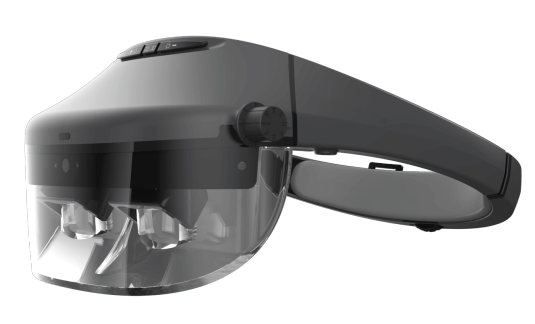Click Here to view More Content Writing Examples.
Main Keyword (in italic): 20/200 vision, digital wearable visual aids, low-vision digital glasses
Secondary Keywords (in italic): Throughout Content.
 Our vision is extremely important to us. What would the world feel like without sight? That is why when we are little we go to the doctor to check whether our sight is working. Some of us lucky ones have 20/20 vision. But if you are only able to see at 20/200 or lower, even with corrective lenses, you can be diagnosed as legally blind. But there has been major advancements in vision technology of late. In this article we will cover the points: How does 20/200 look like, Can 20/200 vision be corrected, Digital wearable visual aids, Low-vision digital glasses, Digital glasses for legally blindness, Digital wearable visual aids for low vision, Acesight electronic glasses for people with macular degeneration cataracts and other eye diseases and wearable magnifier for watching TV. Ultimately we will answer the major question: Can 20/200 vision be improved with digital glasses?
Our vision is extremely important to us. What would the world feel like without sight? That is why when we are little we go to the doctor to check whether our sight is working. Some of us lucky ones have 20/20 vision. But if you are only able to see at 20/200 or lower, even with corrective lenses, you can be diagnosed as legally blind. But there has been major advancements in vision technology of late. In this article we will cover the points: How does 20/200 look like, Can 20/200 vision be corrected, Digital wearable visual aids, Low-vision digital glasses, Digital glasses for legally blindness, Digital wearable visual aids for low vision, Acesight electronic glasses for people with macular degeneration cataracts and other eye diseases and wearable magnifier for watching TV. Ultimately we will answer the major question: Can 20/200 vision be improved with digital glasses?
20/200 vision
First of all let us go into what is means to have 20/200 vision. We begin with an interesting fact. By 2050 an estimated 2 million people will be blind. A legally blind person has a visual acuity of 20/200 or less. 20/200 vision will affect your functional vision and cause problems with seeing things at a distance. The test is done on the better eye. Another important fact is that blind people may have the capability to see something. Now we will discuss the different types of bad vision. Normal vision is 20/20. If you can read the second line of the Snellen Eye Chart from 20 feet away but not the first, you have 20/200. If you cannot read the first line you have 20/200 and even worse.
Age Related Macular Degeneration
There is no known cure for low-vision patiences with AMD (age-related macular degeneration). But there are treatments for macular degeneration to lessen the progression of the illness. This will stop the person from losing their vision completely. AMD causes patients to lose central vision, making it harder to see faces of people. These people cannot even cook or fix stuff around the house. It usually starts at the age of 50 years or more. If the person uses narcotics such as smoking, has high blood pressure or has a high fat diet they are also at risk. Macular degeneration surgery is a type of laser photocoagulation used to treat AMD. But note that the average cost for treating AMD is $9000 to $65000. I guess if people can’t afford this then a quick fix would be to use low-vision glasses first and then try and save up money. The sad thing is that people with AMD may not be able to work a 9 to 5 job or a physical job.
AR and VR Low-vision Electronic glasses
Now we will go into AR and VR Low-vision Electronic glasses. Virtual Reality (VR) and Augmented Reality (AR) are now being used to help the vision impaired. Low vision electronic glasses allow you to read print and allows customers to do outdoor activities.
Virtual Reality (VR) includes using a headset with an embedded screen that displays a virtual world. Most headsets of VR devices use head tracking technology. It enables users to view their surroundings by simply moving their heads. Ut works by using two binocular televisions and stimulating remaining photoreceptors. This allows the brain to receive more visual information so as to maximum functional vision.
We will now discuss AR and Low Vision AR Electronic Glasses. AR stands for Augmented reality. AR allows for people to add digital elements to their actual environment. VR transports you to a virtual world. AR differs in that it uses the real panoramic field of vision and adds digital layers to the environment around you. Most low-vision electronic glasses (E-glasses) with AR technology allows individuals to see everything around them and they can see in high contrast color and high definition. AR assists in improving peripheral vision loss and central vision loss. The actual AR device is a panoramic electronic amplifier. The user can select the magnification while giving them the power to detect the position of objects in reality. Ultimately people with limited vision can experience a more normal visual experience.
So it comes down to VR or AR. VR headsets do restrict some movement. The eyes are directly covered. Users then cannot walk on their own whilst wearing them. Hence VR headsets are more suited to activities where the user is stationary like TV viewing, newspaper reading, videos and Tablets. AR low vision smart glasses give you clear vision. The design of the device allows users to monitor the surroundings with it’s peripheral vision. This ensures safe movement. Of course it would have to be a comfortable or secure environment. Hence AR is suited to dynamic interaction (even outdoor) and simple stationary activities like book reading and studying in a typical classroom.
Please note that the design of VR visual aids includes covering the eye. This design is isolated from the outside. But even in a gloomy environment the inside visuals displays good brightness. But with AR glasses they become more sensitive to outside light. Therefore in dark environments such as a theatre or restaurant a user may not get the clear image they need. Both AR and VR low-vision eyewear are very expensive. You must also try them on and see whether you get dizzy or disoriented.
One product that assist users with low-vision is called “Acesight VR Low Vision glasses”. They empowers users to go from 20/200 and 20/400 all the way down to 20/40. These glasses will work if you have the following impairments: Age-related Macular Degeneration (AMD), Myopic Macular (MM), Retinitis Pigmentosa, Diabetic Retinopathy, LisRetinal Detachment, Glaucoma, Stargardt’s Disease, Cataracts Lebers Hereditary, Optic Neuropathy, Optic Neuropathy and Optic Atropy.
Acesight electronic glasses enables you to enjoy a TV screen (movies/TV) and certain low eye movement hobbies. Hobbies like cooking and gardening may be improved. If you are a student at school you will also benefit from Acesight glasses. You definitely will get the most out of this product if you enjoy TV. Watch a TV show without image lag. The TV imagery will appear more sharply but you have to sit at a normal distance from the TV set. Another great feature includes the ability to see the faces and movement of your friends and family. You may experience peripheral vision loss and even central vision loss. But at the very least you will see the faces and the expressions of the face.
The Acesight electronic glasses have a top camera which delivers 65 degrees wide field of view. The elastic straps fit every size. When you put the device on you can use the Acesight VR even with your optical glasses on. The whole device is very light weight. There is even a remote controller that is easy to use. You can learn how to use this remote control in 5 minutes. Acesight VR does not use Wi-Fi. This keeps what you see private which is very important. After 1 hours worth of use the device will stay at a cool temperature. Zoom out to capture everything in your view. Acesight VR camera will deliver a 4 times more detailed image compared to 12 megapixel competitor products. You will also be able to see farther and wider.
Conclusion
With todays advancements in surgical procedures there is hope for people suffering from Cataracts. It is up to you the patient to get regular checkups so as to detect the formation of the Cataracts. But sometimes we are pre-disposed to this illness and so surgery is the only option. Now days the Cataracts Surgery is very advanced and thank god it has a very good success rate. We have defined Cataracts and covered Six Key Things about Cataract Surgery: 1. Why is Cataract Surgery Performed?, 2. How to prepare for Cataract Surgery, 3. What happens during Cataract Surgery?, 4. What to expect after Cataract Surgery, 5. What can go wrong with Cataract Surgery and 6. What are the Alternatives to Cataract Surgery.

